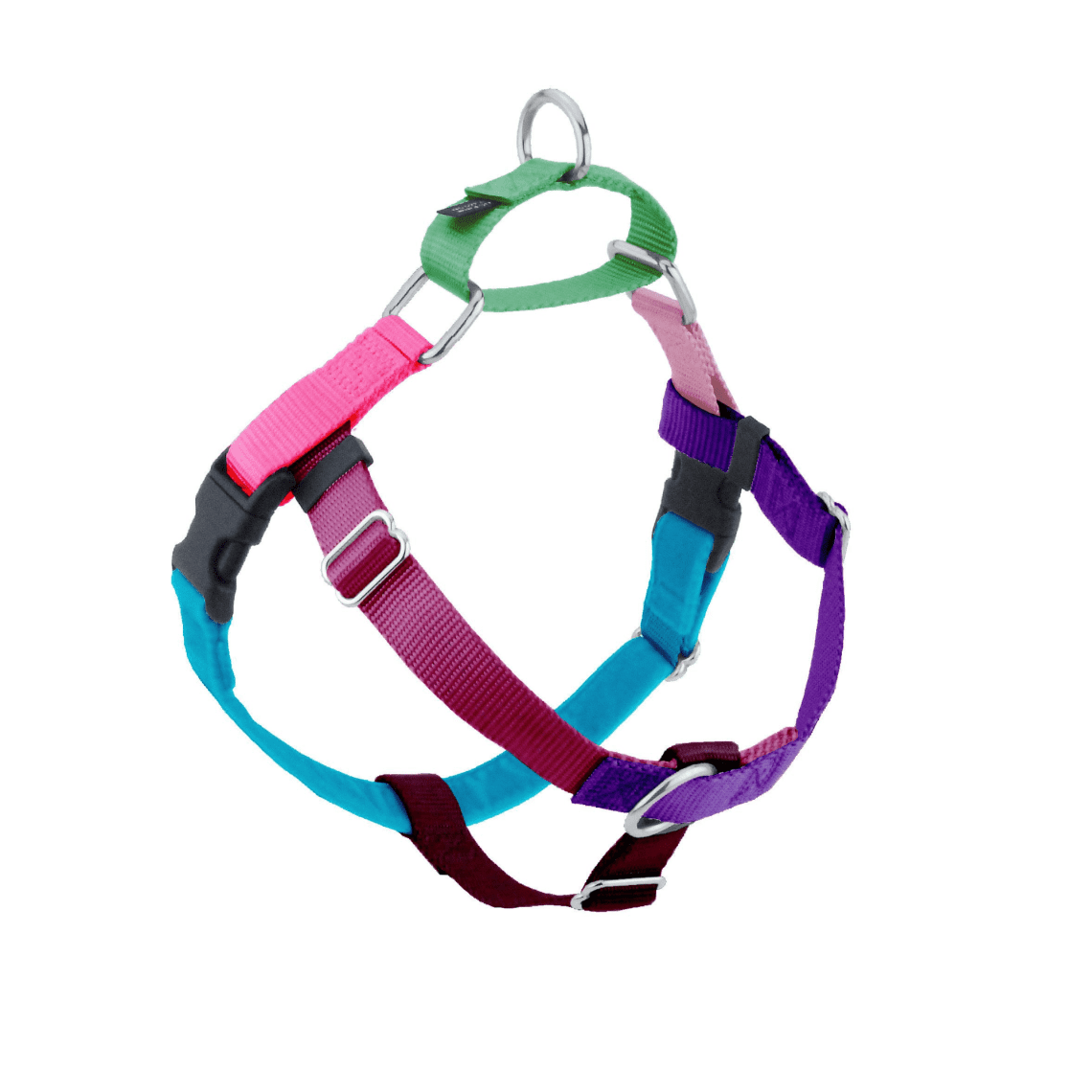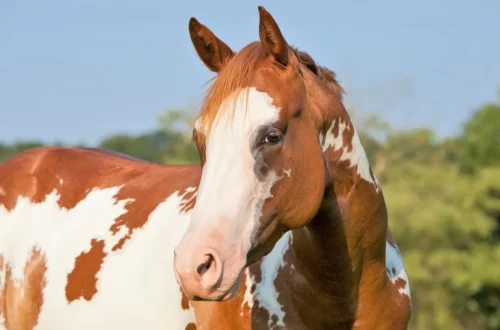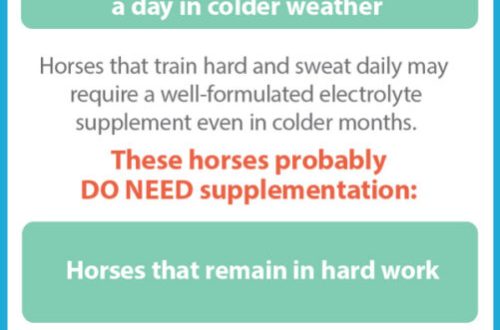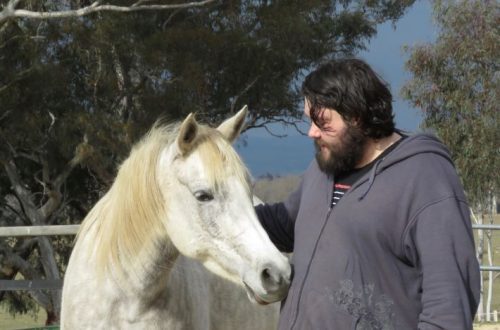
Athletes talk about martingales and other “magic ropes”
Contents
About martingales and other “magic ropes” athletes say
Is the use of martingales and other aids necessary or mandatory when it comes to the daily training of a horse? This question is answered by professional riders who specialize in the three main equestrian disciplines – eventing, dressage and show jumping.
Amanda Ross: triathlon
I use martingales in work with horses that can lay down in the hand and pull out the reins on the jump.
Nevertheless, the initial training of horses is carried out without a martingale – I try to correct the behavior of the horse without the use of auxiliary means, I solve problems gradually, with the help of an ordinary rein, on a soft iron. I prefer to work the horse into bends to prevent head jerking, looking for contact with the mouth.
Sometimes when jumping, the horse may go over the reins, lift his head and move away from the contact. The martingale can help reduce the frequency of these phenomena, but only after I have taught the horse to yield to snaffle pressure. Otherwise, the horse may start to constantly lift his head and bite the iron, which will make the problem even more serious.
When should you use martingale for the first time? Most of the riders I train tend to use the martingale as soon as the horse starts to lift its head higher while overcoming obstacles.
But the martingale is not a tool to teach the horse to keep his head down—it only holds him back when the horse is learning to yield to rein pressure (short martingales, which I find harmful, do cause the horse to keep his head down).
During competitions, when you don’t have the opportunity to get the horse’s head down in a circle or dressage, the martingale can be a good aid. It seems to me that in such a situation, he can help restore and stabilize contact.
Martingale can be very useful, but the rider must understand what length he needs and why.
When working with horses strong neck and weak ass I used sheet pile. It is good for those who are not yet ready to use two pairs of reins in work. I use a dowel with children so they can maintain constant contact and round the back and neck of their ponies.
Also useful are sliding rein
и martingale system Market Harborough.
If we talk about what “magic ropes” I really cannot do without in my work, then I will answer with confidence: without a cord and interchanges! I would also not want to give up the elastic dowel.
elastic sheet good for teaching a sensitive horse to round and relax his head, neck and back without pinching them.
interchanges, in turn, prevent the horse from lowering his head too low and form a stable contact. I pass the cord through the inner ring of the snaffle and fasten it to the outer – this helps to make the neck muscles more elastic.
Marie Tomkinson: dressage
We saddle horses at the age of three and immediately put on martingales. This is necessary for several reasons: firstly, it will facilitate the work of the rider if the young horse is frightened or smashed, secondly, the martingale helps to keep the horse’s head in a stable position, and thirdly, it is a kind of stabilizer, since the young horse under the rider is not balanced and not self-confident.
Most horses don’t need a martingale, so we’ll be removing it shortly. But animals that are “hotter” or those who find balance for a long time wear it for some more time. We use the martingale as long as it works for us and helps keep the horse in correct frame.
I believe that when dealing with a badly ridden or badly trained horse, with the martingale we can provide ourselves with an additional means of controlling the animal. It limits the movement of the head and neck of the horse, which is deprived of the ability to pull the reins and thereby pull the rider out of the saddle. I also think the martingale will help riders who are struggling to keep their horse’s attention and concentration often distracted by what’s going on around him. Perhaps it is the rider who is not in a stable position and cannot maintain contact with the horse, but one way or another, he will get better.
In work with young horses, we use regular bits and Hanoverian capsules..
A simple snaffle is used in the future, in combination with a mouthpiece – we need high-quality training, and not playing with strict iron to solve problems.
Sometimes we use sliding reins. There are 18 heads in the stable, but only one horse really needs them. She is very “hot” and likes to lift her head. Sliding reins are the best way to “calm” her at the moment. Hopefully things will change as she gets older and more experienced.
In a perfect world, we are all perfect riders on perfect horses, but the reality is that sometimes we just need aids. We use saddles, bridles, boots, etc. So why not use assistive controls if they can help us?
The only thing that is really bad for your horse is an illiterate ride, poor quality training. They affect its physical and mental health, so you need to strive for the ideal here – follow the training of the horse so that in the future it does not have to be retrained. We try not to use spurs for as long as possible, and even with Grand Prix horses we wear them as infrequently as possible. After all, the horse has to cooperate with us on the snaffle, without spurs… there is something to strive for. Some horses are easier than others! But I wish you good luck!
Alex Rooney: show jumping
Personally, I am not a fan of using martingales on young horses. I “open” the reins by helping the horse turn, and it seems to me that the martingale does not help the horse to bend with his whole body, but only bends his neck. If I decide to use martingales, it will only “affect” horses at the highest levels of training, and only if I understand that I can’t cope without a martingale, for example, if the horse starts to break on the route at the tournament.
The martingale prevents the horse from working his neck on jumps, so I would like to see my potential martingale elastic – I do not want the horse to get hit in the teeth.
If I’m going to work on cord, I use gog.
It stimulates the horse to work with his back, to lengthen the neck, putting pressure on the back of the head and a little on the mouth. I also like that it goes between the front legs of the horse, thus allowing him to lengthen the outer part of the neck on the turn. Any aids connected to the sides of the horse limit the curve of the horse’s neck.
Before starting to work on the goga, I introduce the horse to the action of “rubbers” – they will not frighten the horse when he first feels their pressure on his mouth. I am a supporter of soft methods of preparation.
Rubber bands give the horse the concept of a soft and elastic, but constant contact. When using them, the horse will always be in front of the vertical and will never go behind it. Working behind the vertical has irreversible consequences for training.
Before using a gog, learn how it works, learn how to properly fit it to the horse and use it. This will form the basis for further effective and correct work.
Translation by Valeria Smirnova (source).
Photos courtesy of the horse shop Run the shop





